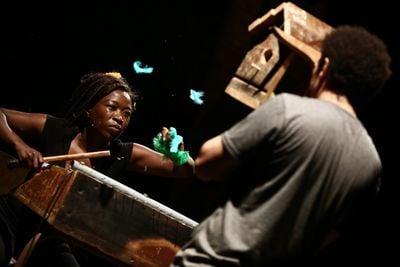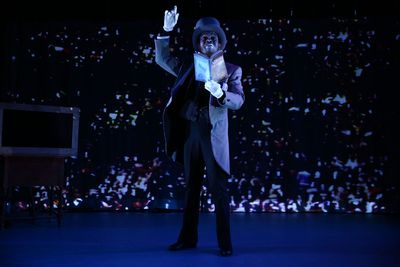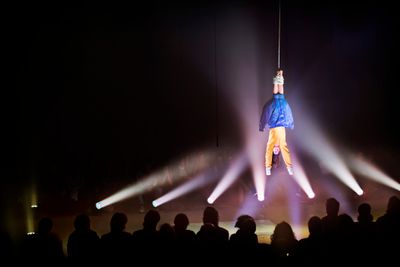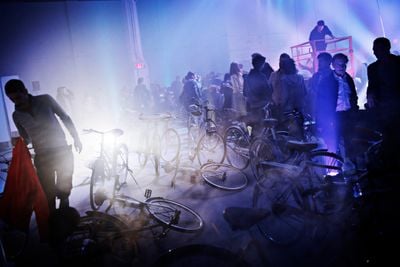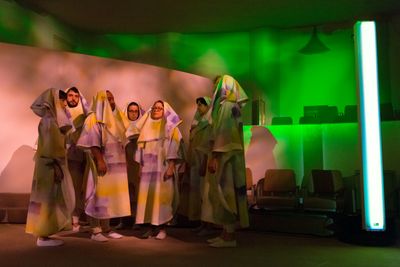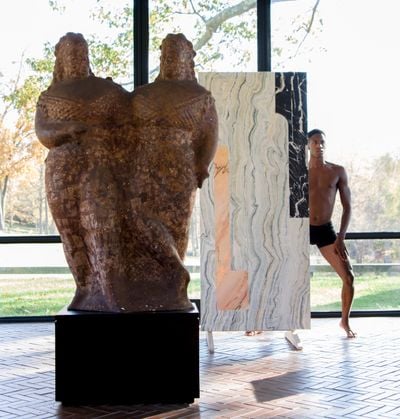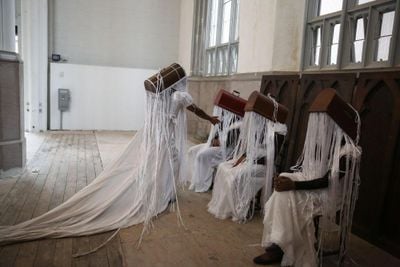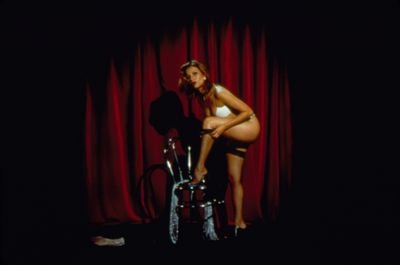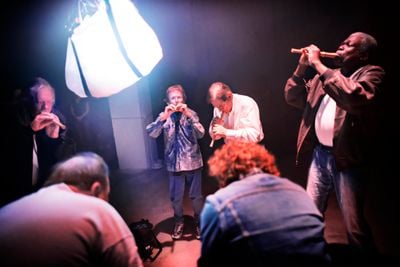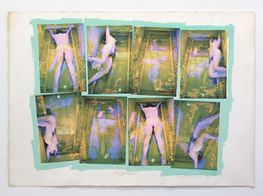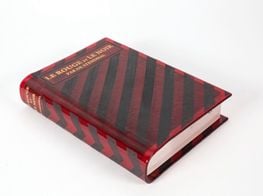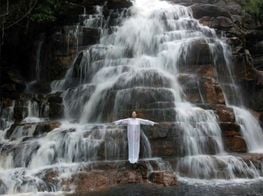RoseLee Goldberg: Performance Then and Now
RoseLee Goldberg. Photo: Patrick McMullen.
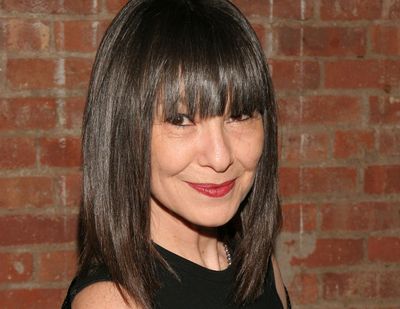
RoseLee Goldberg. Photo: Patrick McMullen.
RoseLee Goldberg had long been invested in contemporary performance art before her founding of the inter-disciplinary arts organisation Performa in New York in 2004. Born in Durban, South Africa, Goldberg studied political science and fine arts at the University of the Witwatersrand in Johannesburg, and then art history at the Courtauld Institute of Art in London.
She was director of the Royal College of Art's Gulbenkian Gallery in London, championing artists like Christo and Jeanne-Claude, Marina Abramović, and Christian Boltanski. With her move to New York in 1975, Goldberg worked as curator at The Kitchen, where she developed an exhibition space, video programme, and performance series, curating the first solo exhibitions of Cindy Sherman, Sherrie Levine, Robert Longo, and many others.
Her first book, Performance Art: From Futurism to the Present (1979) remains a staple in art and curatorial education. Focusing on the United States and Europe, the monograph moves back and forth across both continents. It begins with actions by the Futurists in 1909 and moves through the decades to explore 1980s LGBT and AIDS activism and 1990s Soviet and Eastern European artists, whose lived experiences of political conflict inspired new threads of performance work; finally segueing to the influences of video and the internet.
Goldberg's recent book Performance Now: Live Art for the Twenty-First Century (Thames & Hudson 2018), maps the evolution of live art since the turn of the 21st century, looking at artistic practices beyond the U.S. and Western Europe to 'describe an ongoing living history being produced around the globe.' It includes chapters on performance as a global language, performance and politics, dance and choreography, theatre and performing architecture.
Since 2004, Performa has expanded to support artists through exhibitions, print, education, and online platforms. The Performa Biennial supports interdisciplinary artists to develop new performances, which are presented live in New York over the course of three weeks. Continuing to impart critical historical background through each iteration, Performa 19 (1–24 November 2019) looks at 100 years of Bauhaus and is inspired by the movement's innovation and transdisciplinary experimentation, with artists such as Tarik Kiswanson, who will work with a cast of 11-year-old children to reflect on turbulent times; Nairy Baghramian, who will present an installation and live performance with choreographer Maria Hassabi at a historic Fifth Avenue townhouse; Yvonne Rainer, who will reinterpret her 19965 piece, Parts of Some Sextets, with choreographer and researcher Emily Coates; and composer and artist Samson Young, who will reinterpret the popular Chinese folkloric myth of the Eight Immortals.
In this conversation, Goldberg discusses her book and the history of performance, the coming together of Performa, and her ongoing support of artists in conceiving ambitious and exceptional live performance work.
FKHow did the Performa Biennial come together?
RGThe main reasons I started Performa can be stated in three points. First, I felt the history of performance was neglected and needed to be reinstated and revealed. In 1979 I wrote Performance Art: From Futurism to the Present, and while it's never gone out of print, people were still not paying attention to the art form. Second, I wanted to stop time; I wanted to say, 'Let's really spend time with the artist's work.' Not just walk in, walk out, and tell oneself, 'Oh, I'll be back later,' and never come back. The third reason is that I want the viewer to have a profound experience, which relates to commissioning, and how people are engaged. At Performa, we have a very close working relationship with each artist, where we coax more out of each project than they ever thought was possible.
I care every minute that people are inspired and moved by what we're asking them to look at. I want our audiences to think differently about the world after they see the work, and that's where the commissioning idea came from. We're not presenters; we long to make something very special in New York, for New Yorkers. The commissions are like one-person shows, which help to focus on each artist and get their ideas across.
FKIt definitely feels that way, from Cally Spooner's performance And You Were Wonderful, On Stage (2013) at the National Academy Museum to Rashid Johnson's staging of Dutchman at the Russian and Turkish Baths in the East Village, to give two examples from Performa 13.
RGThe experiences are unforgettable. Those are two amazing examples because again, each project comes with a story about how it came about and how we coaxed it beyond the initial idea. When we search for spaces, we look for frames that will enhance the work and give it a whole other meaning. Space can be our biggest risk. We often don't know until quite late in the game what space we're going to use, and it can be pretty unnerving. But my mantra is we work with 100 percent risk; 100 percent trust. We might not know what the outcome will be, but we trust that something amazing will result.
People often ask how decisions on commissions are made. It's not by proposals, and it's not through a committee. I'd been saying to Rashid for years to let me know when he has an idea for a performance, which is what I've done with many artists whose work I love. I saw him one day, and he said, 'I know what I want to do.' He decided to stage the play, Dutchman by Amiri Baraka at the Russian and Turkish Baths on 10th Street. It's such a perfect place for a terrifying piece of theatre that is set in the subways of New York in the middle of summer. Rashid made a film as part of the commission, and he is quoted saying that it inspired him to direct a movie; so it opened a door to a completely new world.
Location is the most complicated part of the puzzle, and yet it is also one of the most important aspects of Performa. I see Performa as a form of radical urbanism to counteract the homogenisation of New York that is happening block by block. At every street corner, there is the same drug store on one side of the street and the same bank on the other. I like to think that we're inserting other memories into the city's spaces, and that people can discover the city in very different ways.
FKHow has the work evolved since you began Performa?
RGIt's as complicated as it ever was. It is never uncomplicated. It's very much a lesson in absolute determination—we always have this belief that things will work out. Organisations transform over time. We're always looking for what's important right now; what is going on in the world, and how things are changing. It never simplifies.
FKCan you tell me about the 'historical anchors' you turn to for each iteration?
RGWe research a historical period with each biennial as a way to inform our team, artists, and audiences. Leonardo da Vinci's organisation of pageants and performances is but one example of the extraordinary history of performance; we must build a way to see and know this thrilling history. We are a museum without walls and with each new 'historical anchor', our curators, fellows, and interns become more and more knowledgeable on so many fronts about producing and curating, but also about the history of performance. Each year, we select a historical anchor. In 2009, it was the 100th anniversary of Futurism, another year it was Russian Constructivism, and last year it was Dada. This year we're looking at 100 years of Bauhaus.
We compile reading materials, taking a cue from the collection of relevant essays that I give my NYU students. So, there's a lot of knowledge that we're trying to build into a library of ideas, which we make available in unusual ways. For Surrealism, we not only looked to Paris, but also Cuba and Brazil and Senegal. With the Bauhaus, we are looking at the global scope of this movement; for example, there was a Bauhaus exhibition in Kolkata, India, in 1923.
There's much work to be done. Performa is deeply collaborative in its manner of information-gathering and operating, and that probably comes from writing this history all these years. We're absorbing and observing endlessly, so it's an accumulation of many different thinkers, writers, and researchers. I like to think that artists feel that they are able to create a reference for themselves from their Performa moment, and that we're always there for them afterwards. We stay very close to the artists with whom we have worked, keeping conversations open, always.
FKWhen you were working on your book Performance Now (2018), what were the most pressing issues for you when it came to performance art today?
RGThe book begins at the turn of the millennium, but in many ways it is a continuation of the books I have written on the history of performance by visual artists, starting with my first book, Performance Art: From Futurism to the Present, in 1979. The book—which has been updated each decade, most recently in 2011—was a re-write of 20th century art history, showing the significant role of live performance by visual artists in shaping that history, while Performance: Live Art Since the 60s (2004), zoomed in on the three explosive decades when performance became really central to contemporary art. The most recent book, Performance Now, starts where that book left off, in 2000. It's been an ongoing story; little did I know in 1979 that I would spend my whole life keeping track of this history!
The surprise of 1999 was how intensely we all felt the coming of the new century. The media made us very aware of it, but I think we were all deeply affected. What would it mean to be living in the future? The 21st century felt very different; technology at entirely new levels of invention that impacted our lives in a million new ways, and globalism on a scale that sent the mind reeling. I wanted to look at what live art means in this new millennium. There were many stories to tell, and I looked at the material as a way to enter those different stories.
FKCould you talk about your process of gathering works and artistic practices in Performance Now in order to produce this living archive of performance? The chapters are laid out in an interesting way, and the book is very much situated in the present, even if it backtracks to the 2000s.
RGYes, the structure of the book becomes the thesis in a way. It highlights issues that have been predominant in the first two decades of this new century. The first chapter lays out the mood of the changing century and talks about performance as visual art, as a highly visual and layered means to describe the complexity of these times. The second chapter deals with performance as a global language; as a way to access hundreds of different cultures. The third chapter is about performance as a platform for articulating political viewpoints, and the other chapters follow—on new dance, the relationship between theatre and performance, architecture, and so on.
As you point out, I am constantly measuring changes in performance against history, looking at the past for cultural and political shifts that change our perceptions and aesthetic references. For me, history is always a touchstone. History is my inspiration. I'm always in wonder at material from the 1920s—for example, performances conjured by the Surrealists or Russian Constructivists—yet how little of this rich past is understood or has been absorbed. I wrote my dissertation at the Courtauld Institute on Oskar Schlemmer and Bauhaus performance, and I'm always thinking of ways to make this earlier material accessible; to show its relevance today and bring it into the present.
Archiving is a never-ending, constant, and constantly evolving process. The Performa archives are an important part of this work and I have an extensive personal archive that is live, in that it is always being added to. Each book I write is a way of turning the archive inside-out by analysing, assessing, and collating different threads of content—marvelling at the image bank that is the accumulative power of this history. I never think of images as documentation, however. I think of images as something that only a visual artist could generate. It's a much larger topic, some of which appears in the introduction to my book, Performance: Live Art Since the 60s. There, I also talk about the role of the photographer as first responder—the first historians to record new developments of the medium. I don't discuss the role of the photographer in such detail in this book, but it's there.
FKIn Performance Now, imagery is not presented chronologically.
RGWhich is very important. The presentation is more issue- and concept-driven. The terrain is too spread out to make connections between what came first. It's more about finding threads of arguments that exist in work across many different continents and contexts. I'm an educator, so I'm always thinking about how to bring my reader up to date and informed in ways that make the material compelling.
Each chapter is a kind of miniature history lesson on the subject of the chapter heading. The dance chapter is a concentrated history of avantgarde dance of the last 30 years, beginning with Judson and Yvonne Rainer. Judson's work re-emerges across the Atlantic, in the highly conceptual material of choreographers such as Jérôme Bel or Xavier Le Roy in France. The architecture chapter is similarly a mini-history of developments since the 1970s. I had to squeeze a lot of ideas into the text to show the historical trajectory, and to make sense of the present.
FKI appreciate the length at which you discuss various histories in the book. The chapter on activism in performance art sheds light on your perspective on this subject, where you weave in 9/11, as well as the invasion of Iraq and its outcome. That is complex material to deal with while thinking about performance art.
RGThank you for reading it so carefully. I studied political science as an undergraduate, and examined parallel histories of art and politics, and that lens is always with me. A political reading of art and culture comes from growing up in South Africa with an awareness, on a daily basis, of the politics of that country. It was impossible to separate art, politics, dance, film, music, architecture, and landscape. It was present and inescapable at every moment of every day. Living in a repressive police state was something that I was deeply aware of from a very young age.
Live performance has its own international language, and I wished to show its importance in different global contexts, but I'm glad you noticed how globalism and politics come in two different chapters. I didn't want to throw them into the same chapter, as though the very factor of work coming from another culture makes it political. If we look at performance globally, we have access to new cultures and different ways of seeing. Nicholas Hlobo from South Africa, for example, takes us into family traditions, values, concerns, and his Xhosa background, and we enter these different passages through performance. His politics is there as well, but more likely in conversation than in the poetry of his stories.
FKMoMA recently presented the history of Judson Dance Theater through performance, film, photography, sculptural objects, and more for Judson Dance Theater: The Work Is Never Done (16 September 2018–3 February 2019). I am curious to hear your thoughts on museums dealing with performance practices.
RGThe museum itself has changed in the past few decades. Up until the 1970s and early 80s, walking into a museum was like stepping into a cathedral or a library. You whispered, you talked very quietly. Today, you go into a museum expecting large crowds, activities, and every corridor and stairwell filled with video and sound. Museums are designed for big groups and big actions. Tate Modern's Turbine Hall is an arena for actions of all sorts. It calls for marching bands. Nowadays, the museum is very different from the silent sanctuary of classical museums.
Museums have had to catch up with the times. The seventies and conceptual art are history now, and museums have had to provide spaces to show that history. Conceptual art and performance go hand in hand. Artists of the 1970s such as Joan Jonas, Dennis Oppenheim, Carolee Schneemann, Robert Smithson, Vito Acconci, Adrian Piper, David Hammons, Yoko Ono, Lawrence Weiner, and Bruce Nauman, to name a few, have created actions and live events as one medium among many. How can this material be exhibited in a museum? Time itself has forced historians and museum curators to recognise that this material was very relevant and that it is essential to present this ongoing story.
I think Performa totally changed the attitude to performance in a museum. We did this from the start with Performa 05, with exciting new commissions by Francis Alÿs and Jesper Just. Marina Abramović's Seven Easy Pieces, curated by Nancy Spector for the Guggenheim Museum, was also presented as part of the first Performa biennial. The excitement generated by Performa showed that performance could be accessible, command large audiences, and, if properly supported and developed, be riveting and beautiful to look at, as much for the general public as for the more specialised art world.
I started Performa because I felt this history needed a very public platform and that it has huge relevance for the present and the future. Moving into the museum is not about institutionalisation, but about the changing museum. Recent developments with MoMA, Tate, the Whitney, and the Met establishing new performance departments shows how much the museum has changed.
FKAnd these changes have happened very quickly.
RGIn a very short time. The first big change was in the 1980s when suddenly it was possible for young artists to show at MoMA and at the Whitney. Before then, you had to be well established to have a museum retrospective. David Salle, Cindy Sherman, and Robert Longo were under 30 when they starting to have museum shows. Now things almost seem to have flipped completely; museums are following the newest, youngest, emerging artists and established galleries are presenting more museum-level shows, organising conversations and producing catalogues, magazines, and publications. Another important shift was galleries regularly presenting performance as a way to keep a lot of energy and streams of visitors moving through their spaces.
FKThere's something about the act of watching something unfold in space. I wanted to ask you about the act of looking. How do you see the relationship between the act of viewing and the location of the performance?
RGI really feel that performance is about the act of viewing over time. My eyes are always riveted to what's going on visually in a performance, looking for clues, references, taking pictures in my mind. When I see a performance, I come away with powerful visual memories. The images are unmistakably construed in the first place by visual artists. Visual artists devise performances that result in indelible images, and the images that transpire are art. —[O]



